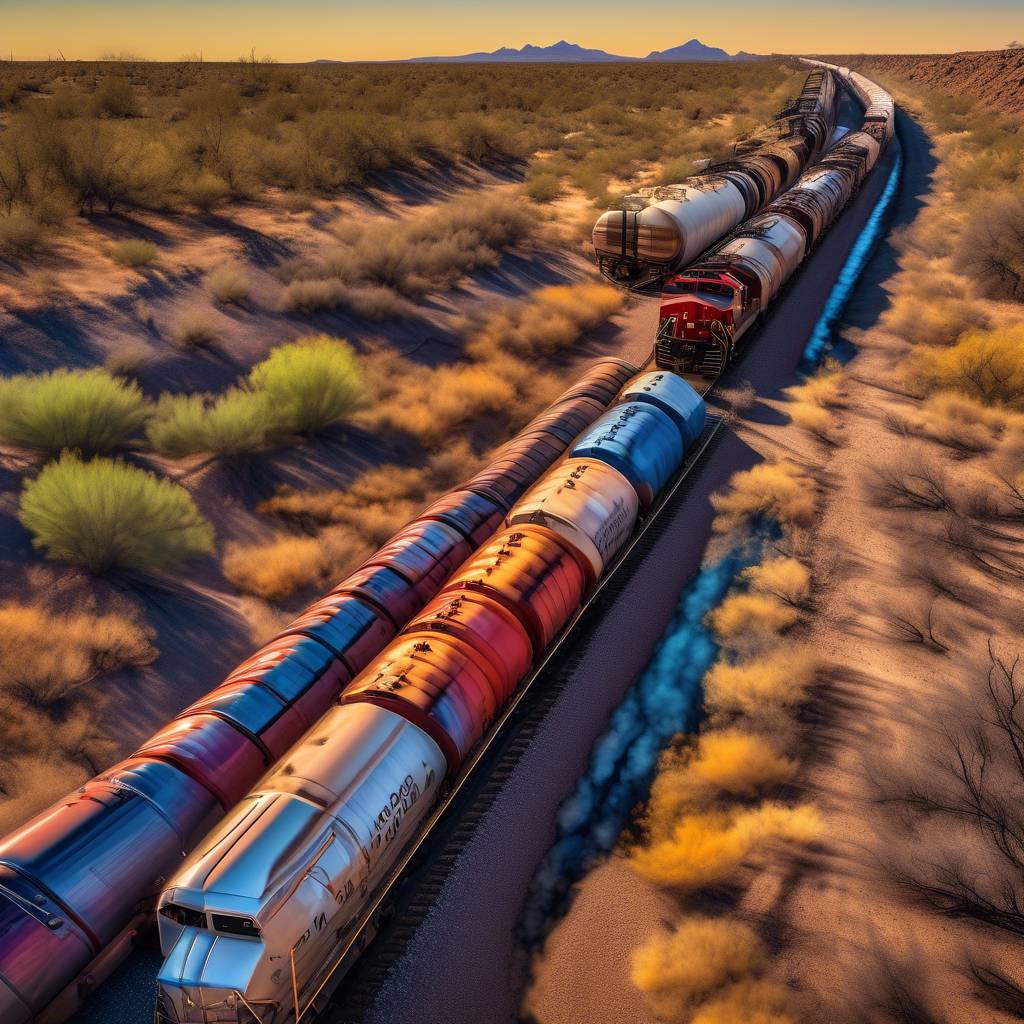A freight train derailed on Friday near the Arizona-New Mexico border, causing traffic to halt along Interstate 40 as the region was still recovering from severe weather. The New Mexico State Police and various other agencies responded to the scene of the derailment, which left the freight train sprawled out along the interstate. Despite the train carrying gasoline and non-odorized propane, there were fortunately no reports of injuries. The train promptly caught fire after the derailment, leading to the closure of the interstate in both directions as authorities worked to extinguish the blaze.
Video captured by Hunter Smith and obtained by Fox News Digital showed the aftermath of the derailment, with the cargo train lying on its side beside the tracks. The incident occurred following a tornado that tore through Northeast Lincoln on Friday afternoon, adding to the chaotic and dangerous conditions in the area. The NMSP confirmed that the interstate was closed in both directions as numerous agencies collaborated to put out the fire and clear the scene. The closure led to significant traffic diversions in both Arizona and New Mexico, with vehicles being redirected onto alternate routes to circumvent the affected area.
Despite the destruction caused by the train derailment and subsequent fire, there were no injuries reported as a result of the incident. The train was carrying potentially hazardous materials, including gasoline and non-odorized propane, which could have resulted in a far more catastrophic outcome. The rapid response of the New Mexico State Police and other agencies helped to contain the situation and prevent any casualties. The derailment was a stark reminder of the dangers that severe weather can pose to transportation infrastructure, as the region grappled with the aftermath of the tornado that had struck earlier in the day.
The closure of Interstate 40 in both directions led to significant disruptions in travel for motorists, as traffic was diverted onto alternate routes to avoid the site of the derailment. In New Mexico, traffic was directed off the interstate at exit 20 westbound and rerouted onto various roads before rejoining the highway further along the route. Arizona also implemented diversions for travelers, redirecting vehicles onto different highways to bypass the impacted area. The collaborative effort of multiple agencies and law enforcement entities helped to manage traffic flow and ensure the safety of all individuals in the vicinity of the derailment.
The incident serves as a sobering reminder of the potential risks associated with transporting hazardous materials by rail, especially in the wake of severe weather events. The swift response of emergency services and the coordinated efforts of various agencies helped to prevent a more significant disaster from unfolding. Despite the challenges posed by the derailment and ensuing fire, authorities were able to contain the situation and mitigate any potential harm to the surrounding community. As the clean-up and recovery efforts continued in the aftermath of the incident, lessons were likely to be learned about improving safety measures for transporting hazardous cargo in the future.
The derailment near the Arizona-New Mexico border underscored the importance of emergency preparedness and effective response strategies in managing transportation incidents. The collaboration between law enforcement, emergency services, and other agencies played a crucial role in containing the situation and preventing any injuries or casualties. As communities in the region worked to recover from the impacts of severe weather and transportation disruptions, the incident served as a stark reminder of the vulnerability of critical infrastructure to natural disasters. Moving forward, efforts to enhance safety protocols and response capabilities would be essential in minimizing the risks associated with transporting hazardous materials and ensuring the resilience of transportation networks in the face of unforeseen challenges.









